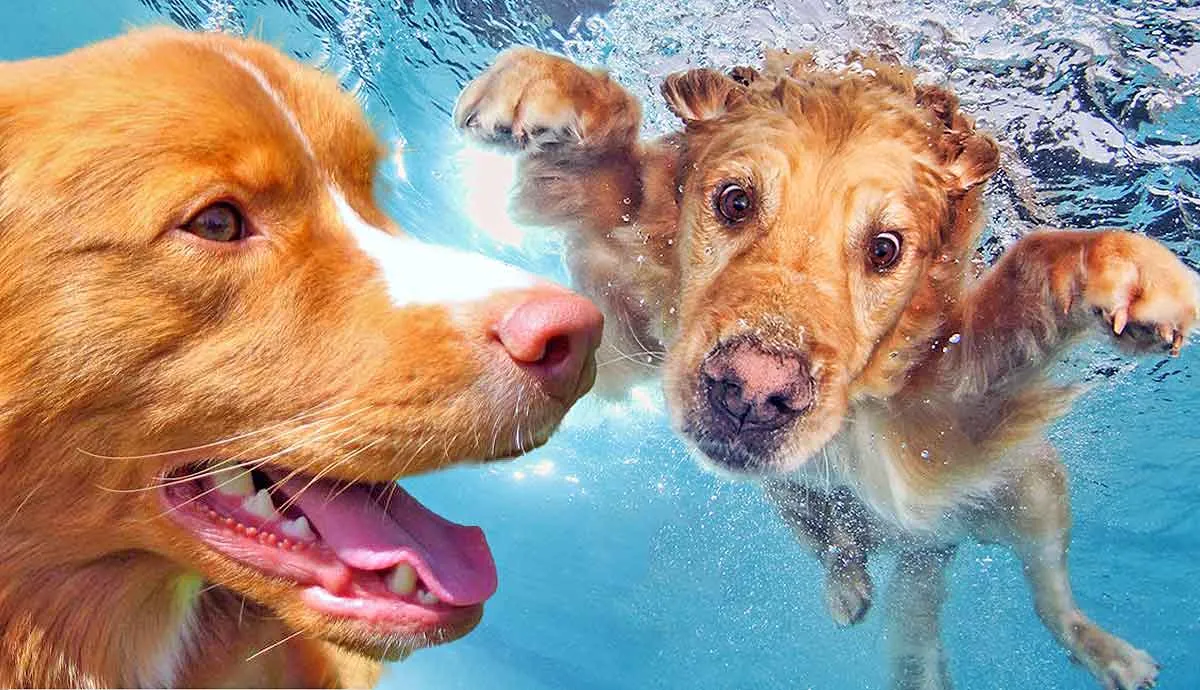Pet parents who love beaches, lakes, and water-related activities need a furry friend who not only tags along but also joins in on the fun. There’s a myth that all dogs know how to swim but not all of them enjoy it or can paddle safely. Dogs with flat faces or shorter legs have body types that make it difficult to breathe and move confidently in water. Below are seven breeds who were born to swim and splash around.
Newfoundland Dogs
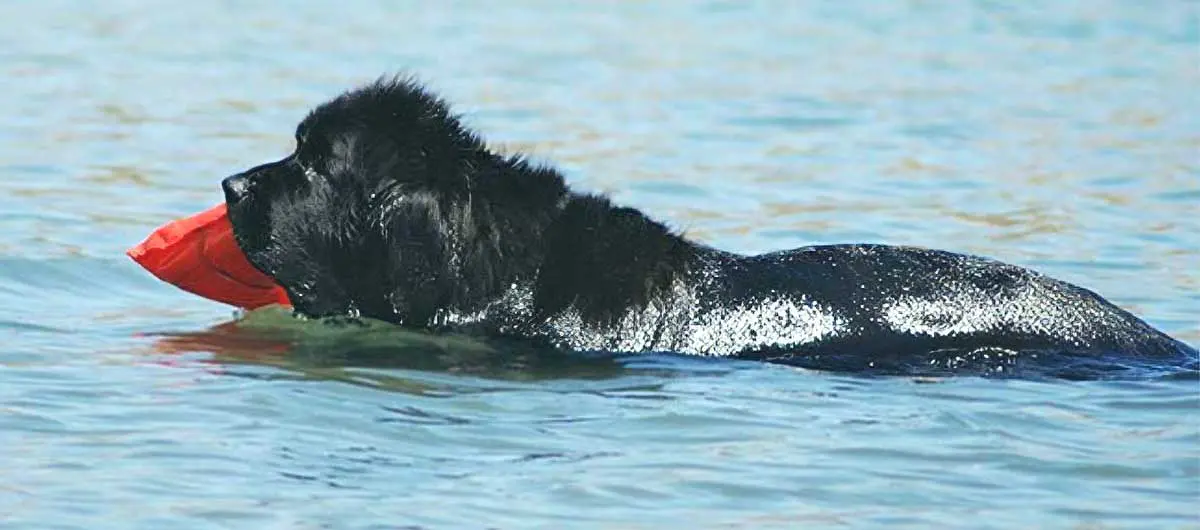
These bearlike, sweet dogs prove that even larger breeds can enjoy getting their paws wet. Newfoundlands have two traits that make swimming and water activities easier. Their thick, water-resistant double coat acts as a natural insulator with double duty: it keeps them warm in cold waters and helps them float. Second, these pups have large, webbed feet like ducks. The extra skin between each paw pad (toe bean) helps them push, paddle, and navigate effortlessly through water or wet environments.
Newfoundlands developed these features because of their water tasks. They began as fisherman assistants who would retrieve nets and have been trained in water search-and-rescue missions.
Golden Retrievers
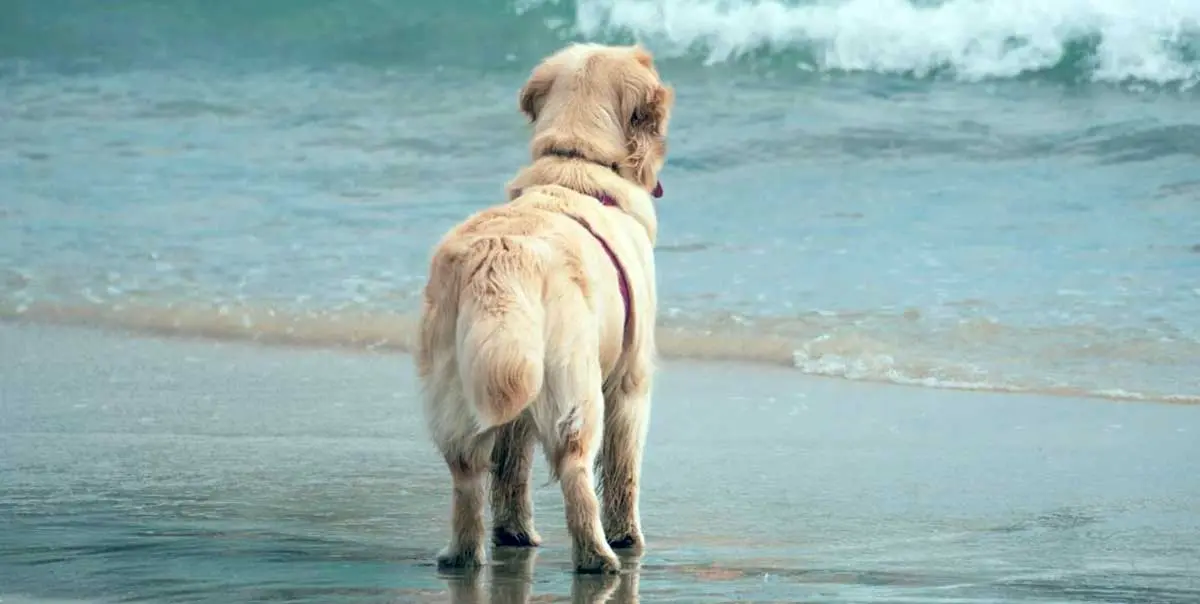
Golden Retrievers are another breed that is no stranger to working in the water. They were bred to help hunters fetch waterfowl, and their love of splashing in lakes, beaches, ponds, rivers, and reservoirs has not left their DNA.
Their water-resistant, double coat ensures they can handle cold temperatures for hours of playtime. Like the Newfoundland, Golden Retrievers are strong swimmers because they use their webbed feet like flippers. Even though these pups have stamina, make sure they stay hydrated and eat while they take breaks to avoid exhaustion.
This breed is also ideal for taking on outdoor trips, hikes, or nature areas with lots of visitors. They are extremely friendly around other dogs, strangers, and young children so you won’t have to worry about Golden Retrievers picking fights with others or showing problematic behaviors.
Portuguese Water Dogs

The fact that this breed has the word “water” in its name proves how it has a long, aquatic history. Portuguese Water Dogs helped fishermen in Portugal’s coastal towns with everything from net retrieval to fish diving to message delivery between boats. Today, technology and machine advancements have replaced most of these tasks, but owners still make use of their love of water. They can be trained for water rescue missions.
Portuguese Water Dogs also thrive in water-related activities like competitive swimming and dock diving, while remaining cherished, loyal companions on land. Even if they don’t compete in sports, recreational swimming is in their nature. These pups have a curly, wavy coat that repels water, reduces drag, and makes for efficient movements.
American Water Spaniels
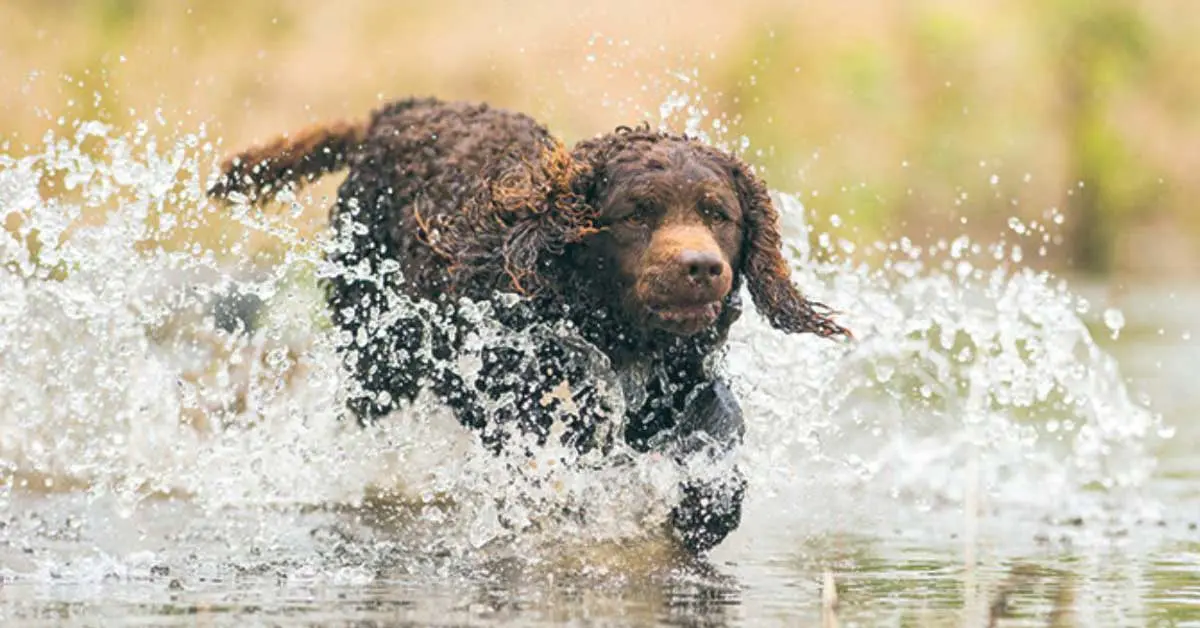
American Water Spaniels take their jobs seriously and are a jack-of-all-trades. They can act as guard dogs, jump into ice-cold water to fetch fowl, and march through marshes, lakes, and rivers. Although they’re a medium-sized dog that weighs 25-45 pounds, they are an athletic breed that will stay with their humans for hours until everything on the to-do list gets crossed off.
As their name states, these dogs originated in the U.S. What isn’t as clear is their history. These weather-proof canines have roots in the Great Lakes areas and their ancestry likely includes English and Irish Water Spaniels. Because they were bred to hunt waterfowl, they are talented swimmers and divers, which they still do recreationally or in competitions.
Nova Scotia Duck Tolling Retrievers

The Nova Scotia Duck Tolling Retriever (NSDTR) has a long name that tells you its place of origin, hunting purpose, and strategies. The NSCTR hails from Canada and made a name for itself as a waterfowl hunting breed. These canines are known for their unique hunting technique of "tolling," where they lure ducks within shooting range by playing and splashing along the shoreline. As a pup that was developed to play in the water, they feel most comfortable using their energy on aquatic activities.
For protection and insulation, they have water-resistant double coats, consisting of a dense undercoat and a longer, protective outer layer. This coat keeps them warm in cold waters but also helps repel moisture, allowing for efficient movement through the water. Like other pups on this list, the NSCTR’s webbed feet enhance swimming abilities, effortlessly navigating bodies of water and chasing dusks.
Poodles

You might hear the word “Poodle” and associate it with dog show competitions, elegance, and a bounce of curls. However, their coily coats are exactly what make them capable water dogs. Originally from Germany, the Poodle was bred for retrieving waterfowl, thanks to its excellent swimming abilities and water-resistant coat. A Poodle’s coat is not only aesthetically pleasing but also serves a functional purpose in the water.
Poodles can easily make heads turn on the doggy runway and then frolic in the water without getting too cold. Some popular grooming styles (such as the “French Poodle” cut) are close to the body to reduce water drag and specifically leave more fur around the joints and torso as an added layer of insulation.
Irish Water Spaniels
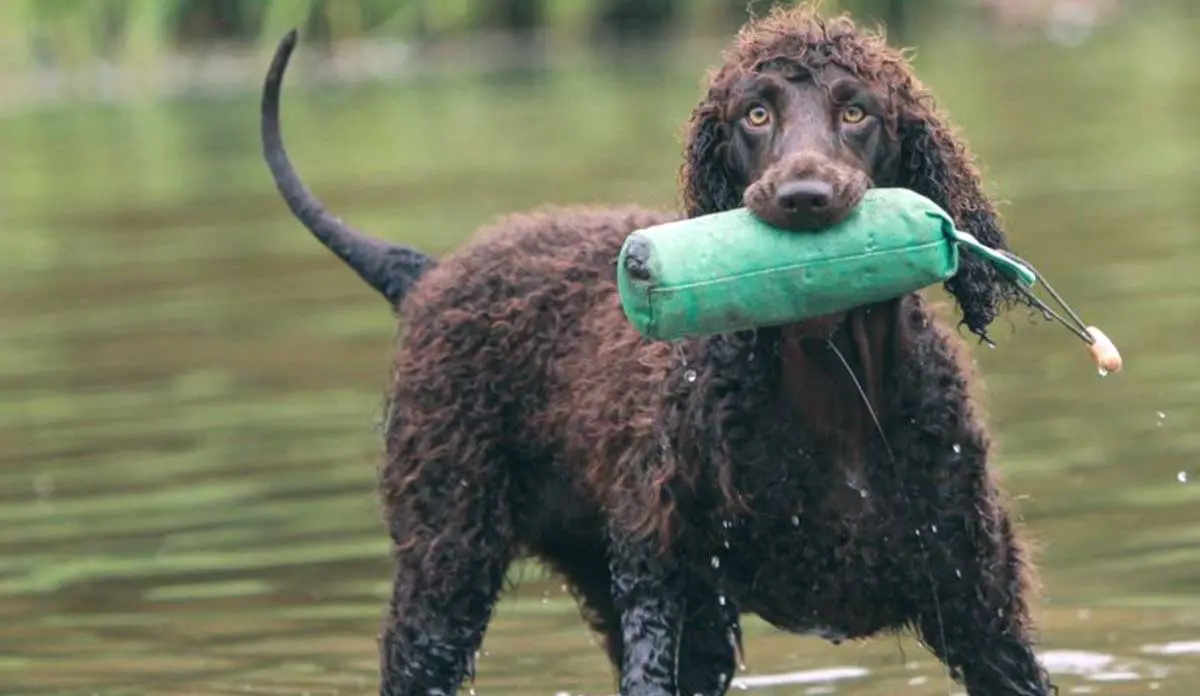
Irish Water Spaniels are the tallest spaniels in the AKC’s registry and stand 21-24 inches at their adult height. They are most commonly seen in a lovely, chocolate-brown coat that boasts water-repelling abilities.
After reading the former descriptions, it’s not surprising that these canines were also bred to thrive in cold water temperatures and capture water-dwelling animals. Their strong, muscular build and stamina mean they have superior swimming abilities, allowing them to excel in retrieving tasks over long distances.
When they aren’t hunting, this breed loves splashing in water. Their non-stop, playful nature makes them the perfect companion for hours of outdoor explorations filled with swimming opportunities at lakes, beaches, rivers, and ponds.


